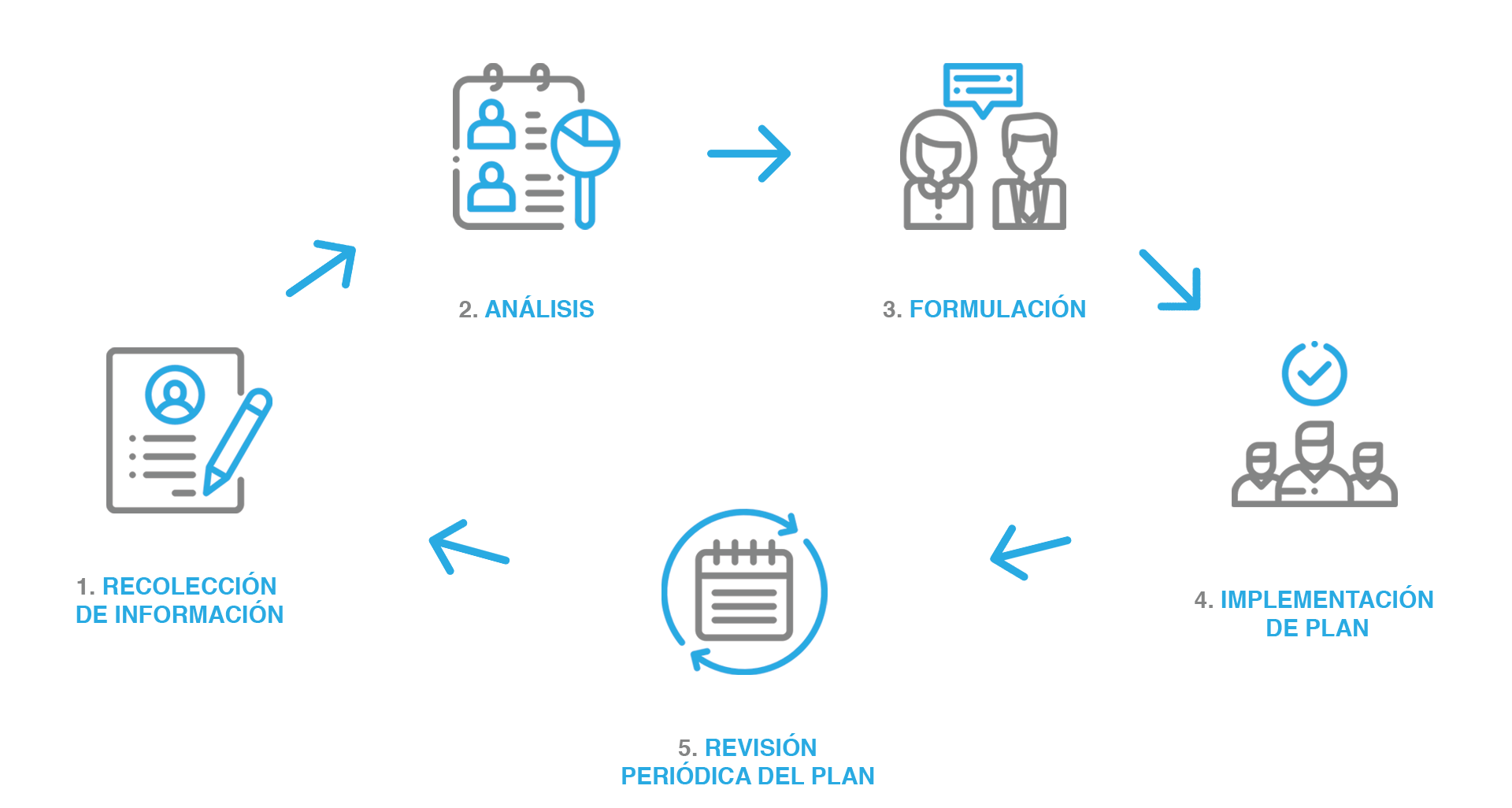At StateTrust Life & Annuities, customers can always rely on professional advisors to guide them on their succession planning. Our planning methodology includes the following steps:
- Collecting Information: Conducting an inventory of our customers' assets, and making a list of their family members, business ventures and other assets that might affect the estate's total value.
- Analysis: Calculating the estate value and identifying who will be the recipient(s) of which types of assets, as well as which of these assets may be subject to taxation and/or other special conditions when transferring certain types.
- Plan Design: The estate planning consultant will consider all the resources available to meet the customer's goal in the succession process.
- Plan Implementation: Resources are put to work. The trust fund's structure is defined, the will is prepared, and life insurance is purchased. In addition, all other legal/financial resources needed to optimize and ensure strict compliance with the trustor's will are put in place
- Periodic Plan Revisions: Disciplined follow-ups are conducted on the plan, to ensure it reflects any changes in the customer's personal or financial situation.
Succession Planning Diagram
The diagram below shows the necessary steps in the design of a solid Succession Plan

Parts of Succession Planning
Estate planning includes various financial strategies and legal tools:
| Will: This legal instrument provides instructions on what to do upon death of its owner. Wills represent a legal commitment. However, they may be changed or cancelled at any time, before death of the asset owner, unless the person becomes mentally incapacitated. |
| Giving assets as inheritance: This strategy consists of granting, as part of the inheritance, properties or assets while the owner is still alive, in order to avoid payment of taxes when receiving these properties or assets upon death of the trustor. |
| Trust Fund: This is a legal and financial instrument designed exclusively to protect assets from tax burdens and distribute them according to the provisions set forth by the trustor. |
| Life Insurance: A life insurance policy is a key element in succession planning. It may be used to pay estate taxes and mortgage debts, to provide immediate liquidity to cover unexpected expenses, such as legal and funeral costs. Life Insurance is also one of the instruments used for charitable contributions or to guarantee income for beneficiaries. |
Succession Process
Several steps must be taken prior to and at the time of death of the estate owner:
- Step 1. Appointing a legal agent. This person will become the executor or administrator of the estate. The customer must trust this person implicitly, since they will act on the trustor's behalf and represent their interests.
- Step 2. Notifying creditors. This is the first step a legal/personal agent must take at the time of death of the customer, in order to quickly determine the true state of the estate.
- Step 3. Making an inventory. The agent will make a comprehensive list of the customer's assets for all legal purposes.
- Step 4. Appraising assets. The estate must be appraised and submitted to a court for review. Each jurisdiction has different laws and regulations to this effect. Establishing the value of assets is important to determine the amount of taxes each asset must pay.
- Step 5. Executing provisional functions. After completing Step 4, the agent will execute certain functions such as collecting estate income, sell assets, file tax returns, and other contractual obligations.
- Step 6. Distributing of the estate. Estate distribution must be executed based on the owner's wishes and plans.
Who is responsible for the succession process?
Succession planning is conducted by a group of people, including the estate owner(s) themselves. Most importantly, each customer's legal and financial interests are the primary objective of the succession process.
Some individuals responsible for the planning process include:
| The asset owner |
| Financial consultant or planner |
| Trust Fund specialist |
| Accountant |
| Lawyer |



 PAY YOUR POLICY HERE!
PAY YOUR POLICY HERE!
 SERVICES
SERVICES
 SUBMIT A CLAIM
SUBMIT A CLAIM MEDIA CENTER
MEDIA CENTER
 CONTACT US
CONTACT US

